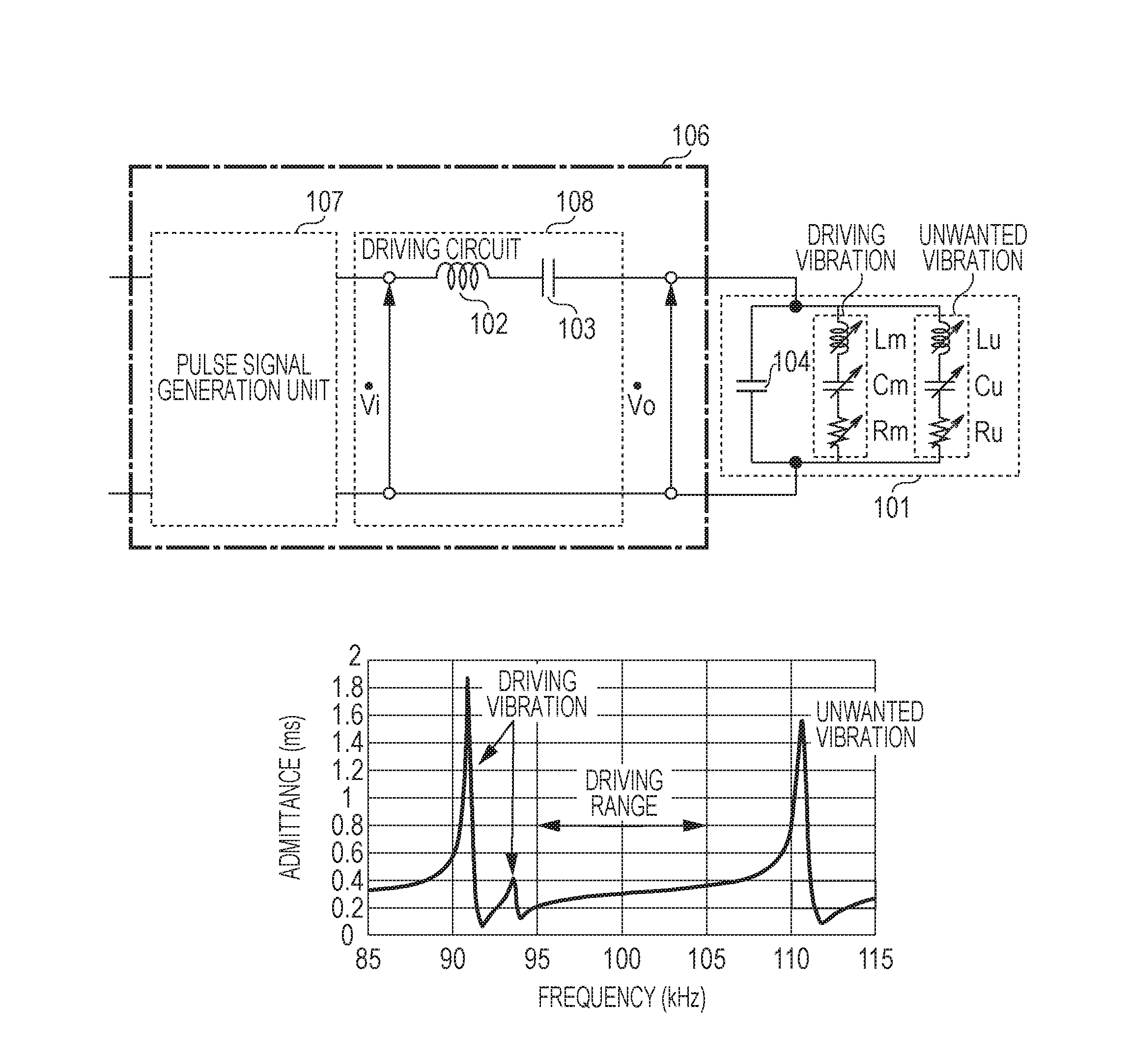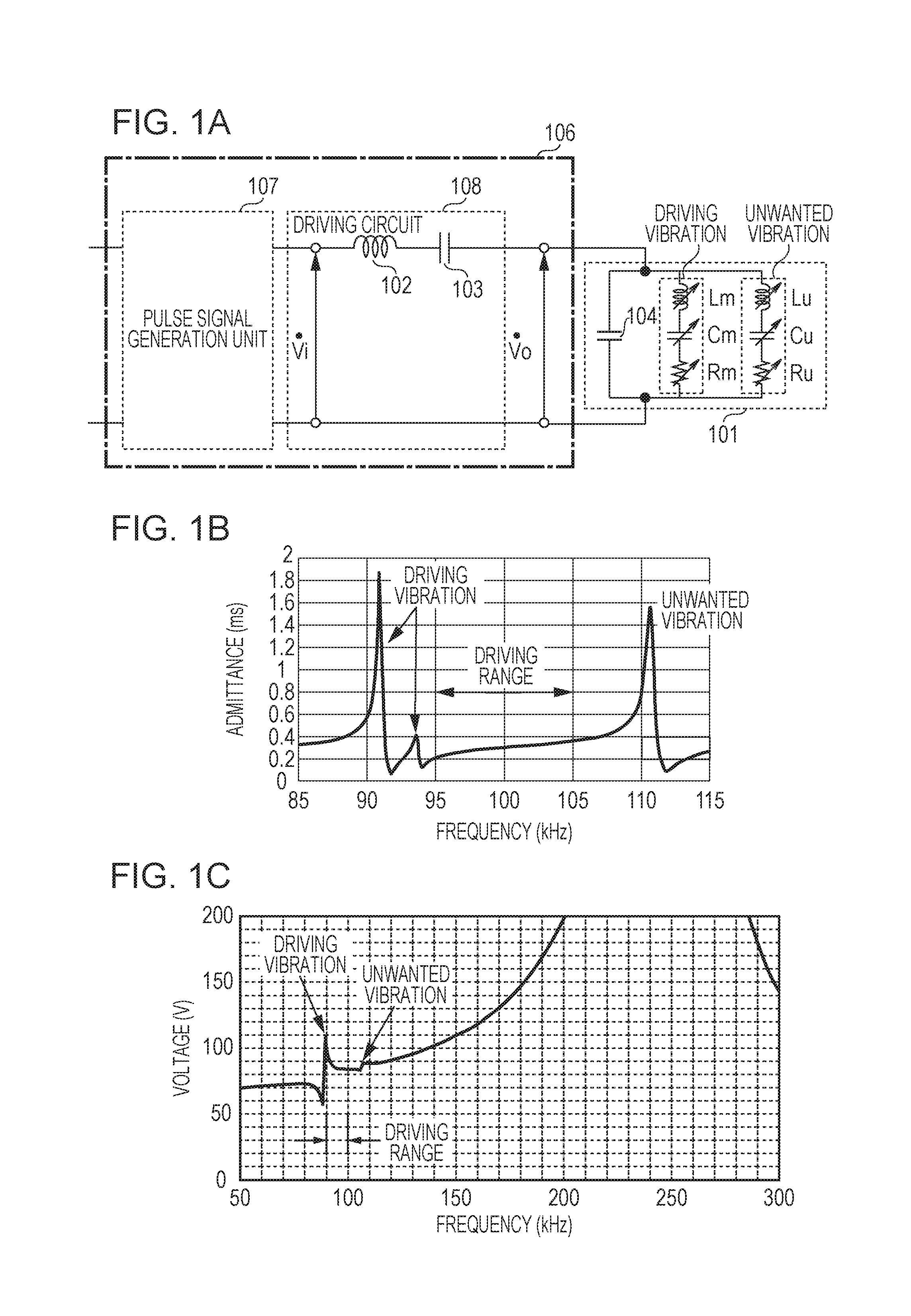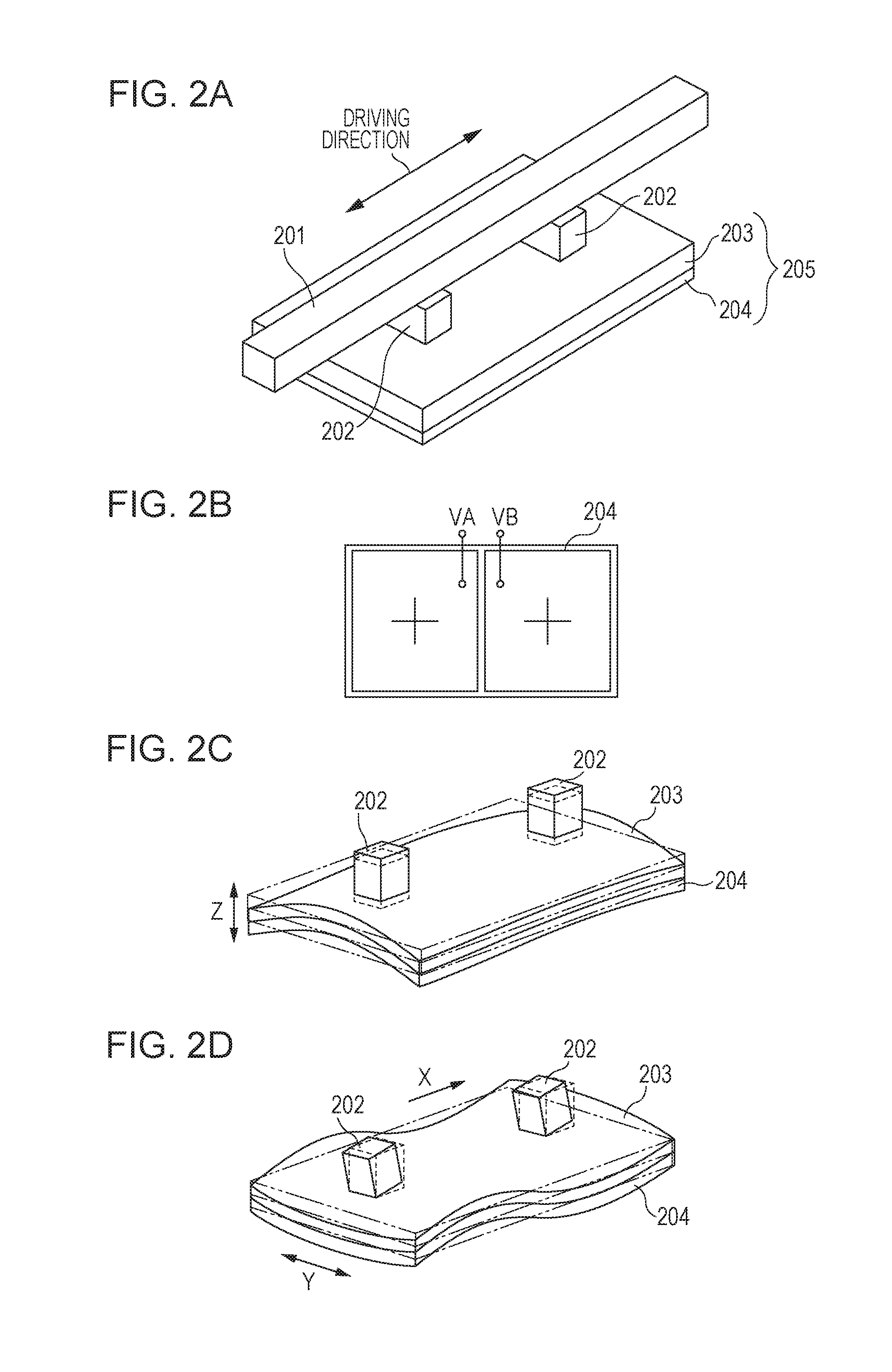Driving circuit for a vibration type actuator, vibration device, image blur correction apparatus, replacement lens, image pickup apparatus, and automatic stage
- Summary
- Abstract
- Description
- Claims
- Application Information
AI Technical Summary
Benefits of technology
Problems solved by technology
Method used
Image
Examples
first exemplary embodiment
Descriptions of a Principle of a Chip Vibrator
[0034]FIGS. 2A to 2D are explanatory diagrams for describing a driving principle of the vibration type actuator of a linear driving type. The vibration type actuator illustrated in FIG. 2A is constituted by, or includes, a vibrator 205 in which a piezoelectric element 204 is bonded to an elastic member 203 and the driven member 201 driven by the vibrator 205. While AC voltages are applied to the piezoelectric element 204, two vibration modes illustrated in FIGS. 2C and 2D are generated, and the driven member 201 in pressure contact with protruding portions 202 in an arrow direction.
[0035]FIG. 2B illustrates an electrode pattern of the piezoelectric element 204. For example, electrode areas divided into half in a longitudinal direction are formed in the piezoelectric element 204 of the vibrator 205. Polarization directions of the respective electrode areas are the same direction (+). Among the two electrode areas of the piezoelectric elem...
second exemplary embodiment
[0077]Next, a second exemplary embodiment will be described with reference to FIG. 7. The present exemplary embodiment is different from the first exemplary embodiment in that boosting is performed by using a transformer and a coil.
[0078]FIG. 7 illustrates a vibration device including a driving circuit for a vibration type actuator and the above-described vibration type actuator according to the second exemplary embodiment. According to the configuration of the driving circuit, a first terminal of the piezoelectric element 101 and a first terminal on a secondary side coil of a transformer 105 are electrically connected to each other, and a second terminal of the piezoelectric element 101 and a second terminal of the secondary side coil are electrically connected to each other. That is, the AC voltage Vo applied between the two terminals of the piezoelectric element 101 is equal to a voltage Vo applied between the two terminals of the secondary side coil of the transformer 105. In ad...
third exemplary embodiment
Circuit with a Resistance Arranged in Parallel
[0095]Next, a third exemplary embodiment will be described. FIGS. 13A to 13C illustrate a vibration device including a driving circuit for the vibration type actuator and the vibration type actuator according to the third exemplary embodiment. According to the present exemplary embodiment, attenuation of the current flowing through the piezoelectric element at the unwanted vibration frequency fu can be realized, and the effect of further suppressing the unwanted vibration can be attained.
[0096]FIG. 13A illustrates a configuration in which an impedance (Z) element 1301 is connected in parallel to a set of the inductor 102 and the capacitor 103. As the impedance element, an element having a resistance component to an AC signal such as a resistance, a condenser, or a coil is used. FIG. 13B illustrates a configuration in which a resistance 1302 is connected in parallel to a set of the inductor 102 and the capacitor 103. For example, fs and f...
PUM
 Login to View More
Login to View More Abstract
Description
Claims
Application Information
 Login to View More
Login to View More - R&D
- Intellectual Property
- Life Sciences
- Materials
- Tech Scout
- Unparalleled Data Quality
- Higher Quality Content
- 60% Fewer Hallucinations
Browse by: Latest US Patents, China's latest patents, Technical Efficacy Thesaurus, Application Domain, Technology Topic, Popular Technical Reports.
© 2025 PatSnap. All rights reserved.Legal|Privacy policy|Modern Slavery Act Transparency Statement|Sitemap|About US| Contact US: help@patsnap.com



